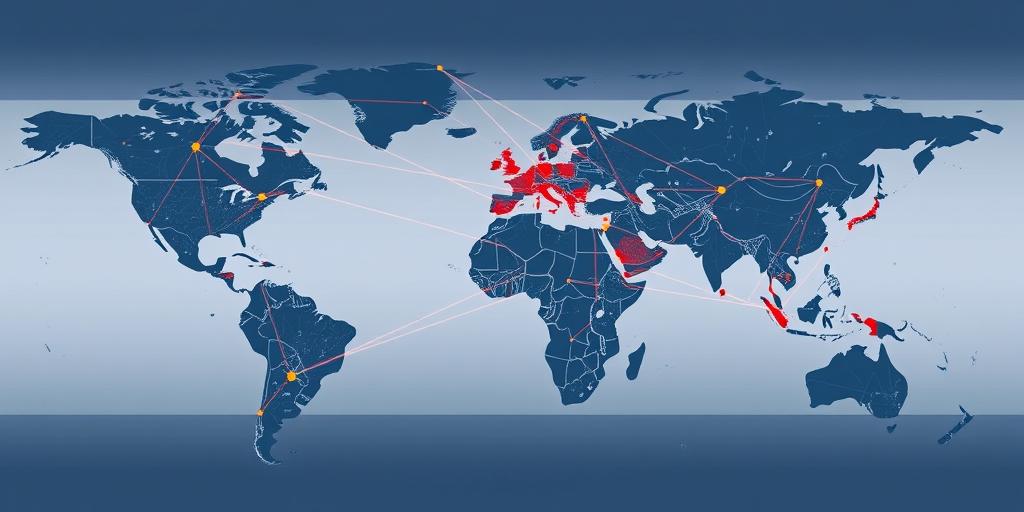The Geography of Supply Chain Vulnerabilities and Resilience
In an increasingly interconnected world, supply chains have become the backbone of global commerce. However, this intricate web of production, distribution, and consumption is susceptible to a myriad of disruptions. Understanding the geography of these vulnerabilities and building resilience is crucial for businesses and policymakers alike.
Defining Supply Chain Vulnerabilities
Supply chain vulnerabilities refer to the potential risks and weaknesses within the supply chain that can lead to disruptions. These vulnerabilities can stem from various sources:
- Geopolitical Instability: Political conflicts, trade wars, and regulatory changes can significantly impact supply chain operations. For example, tariffs imposed on imported goods can increase costs and disrupt established trade routes.
- Natural Disasters: Earthquakes, hurricanes, floods, and other natural disasters can damage infrastructure, disrupt transportation networks, and halt production, leading to severe supply chain disruptions.
- Economic Factors: Economic downturns, currency fluctuations, and inflation can affect demand, increase costs, and create financial strain on suppliers, impacting the overall supply chain.
- Cybersecurity Threats: Cyberattacks can compromise sensitive data, disrupt communication networks, and halt operations, causing significant financial and reputational damage.
- Pandemics and Health Crises: Global health emergencies can lead to lockdowns, travel restrictions, and workforce shortages, disrupting production and distribution networks.
Mapping Geographical Vulnerabilities
Different regions of the world face unique supply chain vulnerabilities based on their geographical location, economic conditions, and political landscape. Some examples include:
- Southeast Asia: Prone to natural disasters such as typhoons and floods, which can disrupt manufacturing and transportation.
- Africa: Faces challenges related to political instability, infrastructure deficits, and regulatory uncertainties.
- Middle East: Susceptible to geopolitical tensions, conflicts, and trade disruptions.
- Coastal Regions: Vulnerable to rising sea levels and extreme weather events, which can impact port operations and logistics.
Building Supply Chain Resilience
Resilience refers to the ability of a supply chain to withstand and recover from disruptions. Building resilience requires a proactive and strategic approach:
- Diversification: Diversifying sourcing and production locations can reduce dependence on specific regions and mitigate the impact of localized disruptions.
- Risk Assessment: Conducting thorough risk assessments to identify potential vulnerabilities and develop mitigation strategies.
- Supply Chain Visibility: Implementing technologies and processes to enhance visibility across the supply chain, enabling quick detection and response to disruptions.
- Collaboration: Fostering collaboration and communication among supply chain partners to share information, coordinate responses, and build trust.
- Redundancy and Backup Plans: Establishing backup plans and redundant systems to ensure business continuity in the event of disruptions.
- Investment in Infrastructure: Improving infrastructure, such as transportation networks and communication systems, can enhance supply chain resilience.
- Technological Solutions: Implementing advanced technologies like AI and blockchain to improve supply chain transparency, efficiency, and responsiveness.
Case Studies
- The 2011 Tohoku Earthquake and Tsunami: Disrupted global automotive and electronics supply chains due to the concentration of key suppliers in the affected region.
- The COVID-19 Pandemic: Exposed vulnerabilities in global supply chains due to lockdowns, travel restrictions, and increased demand for certain products.
- The Suez Canal Obstruction (2021): Highlighted the importance of key transportation routes and the potential for disruptions to global trade.
Conclusion
The geography of supply chain vulnerabilities is a complex and evolving landscape. By understanding the potential risks and investing in resilience strategies, businesses and policymakers can mitigate the impact of disruptions and ensure the smooth flow of goods and services in an increasingly uncertain world. As global events continue to reshape supply chains, a proactive and informed approach is essential for navigating challenges and maintaining a competitive edge.
Long-Tail Keywords:
- Supply chain risk management
- Global supply chain disruptions
- Supply chain resilience strategies
- Geopolitical risks to supply chains
- Building resilient supply networks









